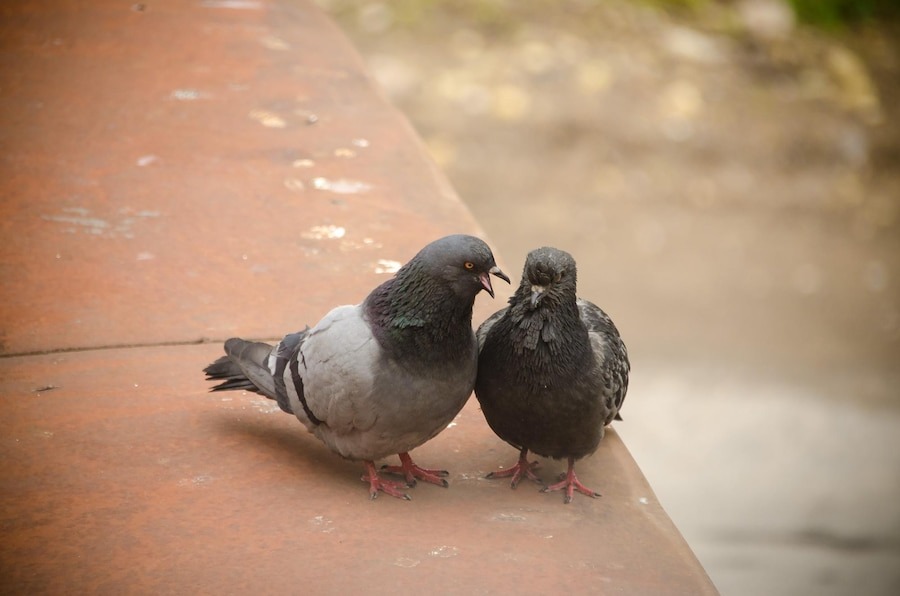Pigeon removal is essential for both health and structural integrity. They might seem harmless at first glance, but their presence can lead to serious health and property issues. These birds, commonly found in urban areas, can carry diseases that pose significant health risks to humans. Moreover, their droppings are highly acidic, causing damage to buildings and infrastructure. To protect your home and well-being, it is essential to understand the dangers of pigeon infestations and learn effective ways to manage and prevent them. This post will elucidate the dangers of pigeon infestations and effective ways to handle them.
Health Risks
Pigeons carry a variety of diseases that pose serious health risks to humans. Understanding these risks is the first step in addressing pigeon infestations.
-
Histoplasmosis is a fungal infection caused by inhaling spores from pigeon droppings. It affects the lungs and can be particularly dangerous for individuals with weakened immune systems. Symptoms include coughing, fever, and chest pain.
-
Salmonellosis: This bacterial infection, caused by ingesting food or water contaminated with pigeon droppings, leads to food poisoning. Symptoms include diarrhoea, fever, and abdominal cramps.
-
Cryptococcosis: Another fungal disease, cryptococcosis, is transmitted through pigeon droppings. It primarily affects the lungs and can spread to the central nervous system, leading to severe complications.
-
Ornithosis: Also known as psittacosis, this bacterial infection can cause severe respiratory issues, including pneumonia. It spreads through inhalation of dust contaminated with droppings or secretions from infected birds.
These health risks underscore the importance of effective pigeon removal to protect public health.
Structural Damage
Beyond health risks, pigeons can cause substantial structural damage to buildings and infrastructure.
-
Corrosion: Pigeon droppings are highly acidic due to their uric acid content. Over time, this acidity can corrode metal, stone, and brick surfaces, leading to significant damage and costly repairs.
-
Blockages: Pigeon droppings can accumulate quickly, clogging gutters and drainage systems. If not addressed promptly, this can lead to water damage, roof leaks, and other structural issues.
-
Electrical Damage: Pigeon droppings can also cause damage to electrical systems, mainly if they accumulate on equipment or wiring. This can lead to short circuits, power outages, and even fires.
Understanding these potential damages highlights the necessity of proactive pigeon removal strategies to protect buildings and infrastructure.
Effective Pigeon Removal Strategies
Addressing pigeon infestations effectively requires a combination of strategies. Here’s how to tackle the problem:
-
-
Deterrents: are physical barriers or devices that prevent pigeons from landing or nesting on your property.
-
Bird Spikes and Netting are among the most effective deterrents. Bird spikes can be installed on ledges, roofs, and other surfaces where pigeons like to perch, and bird netting can cover larger areas, preventing pigeons from accessing them altogether.
-
Scare Devices: Decoys like owl or hawk replicas can scare pigeons away. Electronic devices that emit predator sounds are also useful. These scare tactics take advantage of pigeons’ natural instincts to avoid predators.
-
-
Habitat Modification: Making your environment less attractive to pigeons can significantly reduce infestations.
-
Environmental Changes: Trimming trees and shrubs reduces roosting spots. Sealing building entry points and removing food and water sources can deter pigeons from settling.
-
Regular Maintenance: Keeping areas clean and free of potential nesting materials can discourage pigeons from making your property their home.
-
-
Professional Help: For severe infestations, professional intervention is often necessary.
-
Pest Control Services: Hiring professionals ensures pigeon removal is done safely and humanely. Pest control experts use effective methods and provide ongoing maintenance to prevent future infestations. Consider hiring professional cleaners in Adelaide for comprehensive sanitation and pest control services. Their expertise ensures all health hazards are addressed, and your property remains pigeon-free.
-
-
Sanitation: Proper sanitation is crucial in managing pigeon infestations and preventing health risks.
-
Safe Cleanup: When cleaning pigeon droppings, it’s important to wear protective clothing, including gloves, masks, and goggles. Wet the droppings before cleaning to prevent dust and spores from becoming airborne, reducing the risk of inhaling harmful pathogens.
-
-
Educational Outreach: Educating the public can play a crucial role in avoiding pigeon infestations.
-
Public Awareness: Informing people about the dangers of feeding pigeons and the importance of proper waste management can help reduce the attractiveness of urban areas to these birds. Public education campaigns can encourage responsible behaviour among residents and tourists, further preventing pigeon infestations.
-
-
Conclusion
Effective pigeon removal is crucial for maintaining health and safety. By understanding the risks associated with pigeon infestations and implementing proactive measures, we can protect our homes and communities. Whether through deterrents, habitat modification, professional help, or public education, taking action against pigeon infestations is essential. For thorough and professional assistance, consider hiring professional cleaners in Adelaide. Their expertise can ensure your property remains safe and pigeon-free, contributing to a healthier environment for everyone. By addressing pigeon infestations proactively, we can safeguard our health and infrastructure, ensuring our urban environments remain safe and pleasant for all residents.
